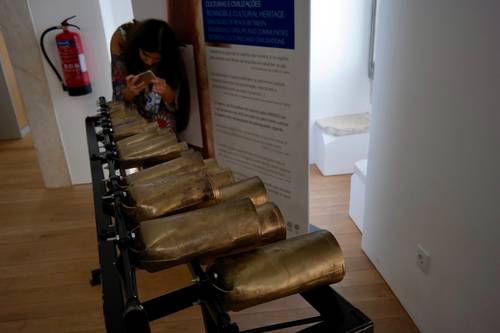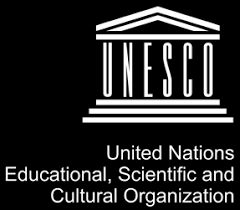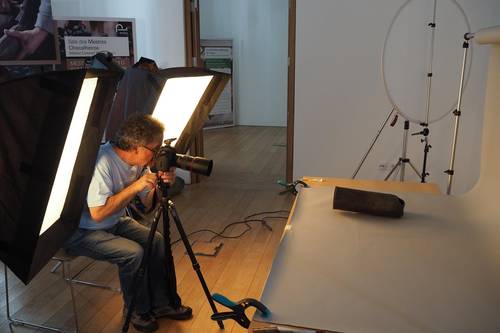Intangible Heritage and Museums: New and Old Challenges? – Ana Carvalho (August 2017)

Cowbells exhibition at Paço dos Henriques (Alcáçovas, Alentejo, south of Portugal), 2016. Photo by Ana Carvalho. The manufacture of cowbells was inscribed in 2015 on UNESCO List of Intangible Cultural Heritage in Need of Urgent Safeguarding. The Portuguese cowbell is an idiophone percussion instrument with a single internal clapper, usually hung on a leather strap around an animal’s neck. It is traditionally used by shepherds to locate and control their livestock, and creates an unmistakable soundscape in rural áreas.
Intangible heritage has become a buzzword nowadays, in part due to the visibility of the UNESCO Convention for the Safeguarding of Intangible Heritage (2003), which called our attention to the need of giving awareness to a living heritage, in constant modification, that is part of the identity of groups and communities and is transmitted from generation to generation.

Intangible heritage: what have museums got to do with this?
While many actors are called to take a stand on this matter, museums are among the heritage community organisations that can or could contribute to the safeguard of intangible heritage because museums are places of tangible and intangible heritage that safeguard our identity, our collective memory, our past and our present, and museums are about how we envision our future. Furthermore, museums are spaces of knowledge, where we can celebrate our cultural diversity: they are spaces of encounter and dialogue. Museums also have an educational function and a social role. Therefore, I would say that intangible heritage is embedded in the whole definition of museums; it’s at the heart and essence of what museums are or should be.
Intangible heritage: what?
Intangible heritage is linked to memory and identity, so this is not new for museums. The recent increased visibility of intangible heritage has made museums reconsider how they are taking into practice an approach that integrates and interprets all dimensions of cultural heritage, and how to balance a traditional approach based on objects and their materiality with a more contemporary perspective that enhances the intangible heritage dimension of their collections. In summary, many museums are trying to find a balance between past and present in terms of how they present intangible heritage to their publics
Therefore, discussing intangible heritage in the museum scene means taking in consideration many layers of interpretation, not only related to collection objects (with their different meanings through time and usages, related life stories, memories, etc.), but also of museum buildings, memories linked to places and landscape (ex. cultural biographies), and a better understanding and knowledge of those cultural practices and cultural life that takes place outside the museum.

Manuel Antunes Cecílio, a master cowbell maker. Photo by Valorização Turística do Património Cultural Imaterial
Making the invisible visible
In some cases, it is not possible to capture intangible heritage in a box since it is alive and in the communities, however museums can engage and be more active towards its safekeeping, and improve awareness of the intangible dimension of collections, buildings and landscape. Museums can also encourage others to engage in reflection about intangible cultural heritage. How? I believe that a more committed approach implies the challenge of interacting more with communities, involving them—and those that are knowledge or tradition bearers—in the museum work, include their voices and knowledge, create more plural, and inclusive spaces of representation by implementing a more participatory museology.

Documenting a collection of cowbells to be exhibited at Paço dos Henriques (Alcáçovas, Alentejo, south of Portugal), 2017. Photo Paço dos Henriques – programa PAGUS from here.
Identify, document and manage: a starting point
No doubt that this commitment to intangible heritage brings an additional set of concerns. It challenges all areas of museum work without exception—from collections, to documentation, to research, to exhibitions, to engaging communities and publics, to ethical issues, as well as to management and funding. But, clearly, documentation represents an important step of any strategy and can feed other areas of the museum work by re-using the information collected about intangible heritage.
Also, documentation remains the starting point of any museum that wants to link its objects to intangible heritage, and doing it while ensuring the widest possible participation of groups and communities. This has been a slow change for many Portuguese museums, and probably many others, because it prompts the need to review procedures in documenting collections and adapt, but there is already a method in use. The creation of the CIDOC Intangible Cultural Heritage Working Group in 2014 is a reminder of the importance of working within processes, and the need to rethink guidelines and formats for documentation of intangible heritage in order to reach a more effective performance in this area. Furthermore, sharing experiences in this field remains crucial to expand museum practices concerning the issues of documentation, but also to ensure access of information about intangible heritage.
Bio: Ana Carvalho has a PhD and Masters in Museum Studies and is currently a post-doctoral researcher at the Centro Interdisciplinar de História, Culturas e Sociedades (CIDEHUS) of the Universidade de Évora (Portugal). Author of the blog No Mundo dos Museus, editor of ICOM Portugal bulletin, and co-editor of MIDAS journal – Museus e Estudos Interdisciplinares.